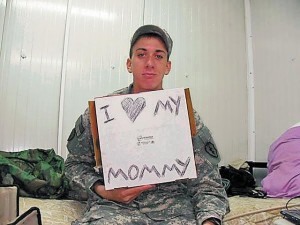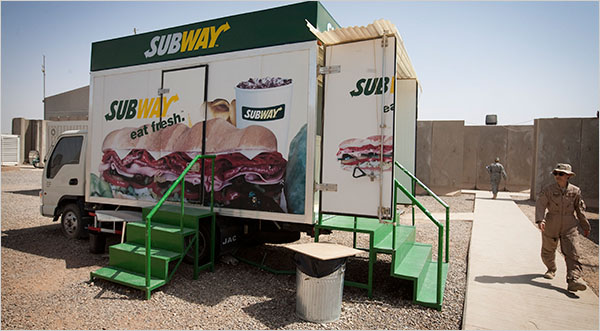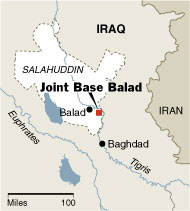Secretary of the Army statements about Makua insults community
So, the Secretary of the Army stops in Hawai’i, makes some remarks about the Army’s need to train in Makua and the military’s respect for Hawaiian culture and the environment.
He did not dare to have a public audience in Hawai’i. The Army canceled a reception with its hand-picked Native Hawaiian leaders because of the possibility that he would be embarrassed by the opposition to Army activities in Hawai’i.
It is outrageous that the Army is now contemplating using Makua to train unmanned aerial vehicles, the drones that have inflicted so much death and suffering on civilians in Afghanistan and Pakistan.
McHugh says the Army wants to use Makua for “full spectrum training”, presumably to pursue the delusional doctrine of “full spectrum dominance”.
McHugh’s remarks illustrate the arrogance of the military in Hawai’i. It will only anger the community that has been working peacefully and productively for decades to have the land returned to peaceful and sustainable uses. As with many of the military occupied sites in Hawai’i, the Army took Makua valley during WWII with a promise to return the land 6 months after the war. It is long overdue that the military make good on its promise to clean up and return Makua.
Remaking the Army’s image to be greener and more friendly to the natives does not solve their problem. Their problem stems from the fact that the mission the U.S. military is training for is illegal and immoral – the invasion and occupation of other countries and the destructive means that pacify resistance as effectively as gasoline douses fire.
>><<
http://www.starbulletin.com/news/20100509_Army_chief_cites_value_of_Makua_for_training.html
Army chief cites value of Makua for training
By Gregg K. Kakesako
POSTED: 01:30 a.m. HST, May 09, 2010
New Army Secretary John McHugh supports the continued use of Makua Valley for military training, emphasizing that closing it would mean the 11,000 soldiers stationed here would have to spend more time away from their families preparing for wartime deployments.
McHugh toured a portion of the 4,000-acre Makua Military Reservation by helicopter and truck Friday morning with Lt. Gen. Benjamin Mixon, commander of all Army troops in the Pacific and former commanding general of the 25th Infantry Division.
McHugh said retention of Makua allows the Army to offer the “full spectrum of training” here without having to send soldiers to southern California. “I think it’s in the interest of the soldiers, the Army and the United States of America to have these forces continuing to be in position to grow, to be fully trained as they are now to go forward to do the nation’s business.”
He added that the Army should continue “making every effort and expending those resources to protect the culture, the heritage and the very unique environmental challenges that exist here.”
McHugh said 25th Division soldiers now spend several months at the National Training Center at Fort Irwin in the Mojave Desert to complete their training for Iraq or Afghan combat missions.
“Coming out of Hawaii, that’s like another deployment,” McHugh added. “It impacts very significantly on the amount of time soldiers have to recover and spend with their families.”
Mixon said the Army plans an environmental study on converting the valley to “a non-live-fire training range” that would focus on programs dealing with the use of drones, helicopter laser and convoy operations and ways to defuse roadside and homemade bombs.
Since 2001 Earthjustice and Malama Makua, a Leeward Oahu group that believes the valley is scared to native Hawaiians, have been fighting the Army over the use of Makua. No live-fire infantry exercises have been held in the area since 2004 because of the court cases.
Both sides agree that more than 50 endangered plant and animal species and more than 100 archaeological features are found in the valley area.
McHugh said at a Friday news conference that the Army has spent $10 million a year to ensure the safety of the endangered plants and animals and provide access to cultural and historical sites. Proponents have argued that is not enough.
Earlier this year Mixon said the Army plans to spend $37 million to convert Makua Valley into a roadside-bomb and counter-insurgency training center.
“It’s obviously an incredible, beautiful part of the island,” McHugh told reporters after his first visit to the islands and Makua Valley. “My first impression visually was that the Army has done a more than credible job in preserving its historic nature and preserving its environmental nature.”
McHugh said he believes the military can share the valley with the community.
Mixon has said that over the next decade much traditional infantry and artillery training can be shifted to the Big Island’s Pohakuloa Training Area.
Makua Valley, with proper funding and support, could become a training center on gathering intelligence, Mixon has said. The center could provide training on homemade bombs used in all parts of the world, especially important given the growing threat in the Philippines, India and the rest of Asia. Soldiers from Pacific basin countries could also be sent here for such training at Makua.
He also said that Makua is a good place to train with unmanned aerial vehicles.
McHugh was in the islands on the last leg of a weeklong visit to Army bases in Japan, South Korea and Hawaii. The former Republican U.S. House member is the Army’s 21st civilian leader. He assumed the post in September.












